The Complexities of Castlevania: SOTN – Subweapon Design Space
December 8th, 2017
[When developing Castlevania: Symphony of the Night, director Koji Igarashi wanted to make a game which would “overturn player’s ideas about Castlevania, yet also feel like a Castlevania game”. In pursuing this vision, his team made SOTN’s game system much more complex, incorporating RPG systems and a wide variety of nuanced player actions. This series of articles will examine how these additions shape SOTN’s core gameplay of moving through space to dodge and attack enemies.]
As with the earlier Castlevania games, sub-weapons function as the primary form of projectile attacks. Their unique movement trajectories introduce a range of aiming techniques to the gameplay, and offer the player more ways of engaging with the spatial game. Aiming subweapons also draws on the player’s knowledge / observation of enemy movement patterns as well as their timing skills. SOTN’s projectile attacks don’t stray far from the series formula. Some of the changes and additions support the ability set’s focus on aiming and spatial gameplay, while other elements function more as spells or special attacks and stand out as anomalies within Alucard’s reportaire of subweapons.
Knife – A dagger which flies rapidly in a straight line (consumes one heart). The player aims by drawing a mental line between Alucard and their target. The quick travel speed renders timing out of the equation (unfortunate given that a slower strike would have made the attack more skill-based). Knives therefore collapse the space between Alucard and his target.
Axe – A projectile which travels in an upwards curve (consumes four hearts). Axes trade speed and ease of aiming for range and strength. The projectile’s trajectory covers a blind spot diagonally above Alucard, but also creates a new blindspot directly in front of him. Axes also travel more slowly than knives and continue to move fall after making contact with an enemy. The subweapon therefore requires much more spatial (aiming and covering blindspots) and timing skill than knives, but also rewards the player with effectiveness.
Cross – A large beam of light which attacks all enemies on screen (consumes one hundred hearts). The heart requirement offsets the weapon’s effectiveness. Crosses function more like spells and don’t require much skill besides trying to net as many enemies on screen as possible. This variation of the cross loses the unique spatial trajectory of the classic boomerang-esque cross.
Stopwatch – A trinket which freezes enemies for several seconds (consumes twenty hearts). Players can use the stopwatch to strategically open up holes in an enemy’s attack, to act as a buffer to dodge attacks, or to pause gameplay when overwhelmed. The effectiveness of the stopwatch depends on the player’s awareness of the combat dynamics at play and the particulars of a given situation.
Bible – A floating bible circles Alucard and protects him from nearby enemies (consumes five hearts). Since the bible both shields Alucard and attacks enemies, the subweapon doubles as both an offensive and defensive sub-weapon. The player aims the bibles by moving Alucard into the proximity of enemies. I can’t help but feel that if the bible weren’t so effective (i.e. if the movement speed were slower, allowing for holes in the shield), the developers could have extracted more nuanced play out of this subweapon (e.g. the player moving Alucard around enemies to cover potential gaps in the bible’s movement). Portrait of Ruin‘s bible subweapon works in this way.
Rebound Stone – A projectile that’s thrown diagonally downwards and bounces off walls (consumes three hearts). The rebound stone extends on the knife sub-weapon as it involves dealing with straight lines, but the lines move diagonally (more complex aiming), bounce off walls, and can move through enemies (which adds more strategy as one stone can potentially attack multiple enemies or one enemy multiple times). In practice, these simple rules create a great deal of complexity when aiming, which is why Rebound Stones are so engaging to use. The potential applications for this type of projectile attack are significant (check out Trajectile for the DSiware as an excellent example). The white trails stand out against the dark backdrops and help the player make sense of the projectile’s movement pattern.
Agunea – A lightning projectile which moves in a straight line and can sustain damage over time once it makes contact with its victim (consumes five hearts). Once the player lands a hit, so long as they hold down the appropriate buttons and don’t run out of hearts or take damage, they can maintain the attack (such as in the GIF). In this way, the weapon encourages the player to dodge incoming attacks or create an environment free of distraction (again, see the GIF). However, considering the conditions needed to make full use of the mechanic (finding one of only four available agunea in Dracula’s castle, having a sufficient supply of hearts, using it on an enemy with sufficient health, and avoiding all incoming attacks), few players are likely to unlock the subweapon’s potential.
Bibuti – A cluster projectile that’s dropped on the ground (consumes three hearts). The longer the fall, the more the water spreads out, and thus the wider the range. The density/range of the clusters therefore depends on the height of the player’s jump. Although the arc is a little different, Bibuti’s unique aiming—much like the Rebound Stones—remind me of aiming fireballs in Super Mario Bros. The unorthodox aiming position diagonally above an enemy creates a unique spatial puzzle. Alternatively, the player could leverage Bitubi’s active state on the ground and use it more like a landmine (as captured in the GIF).
Holy Water – A dropped projectile with similar dynamics to Bitubi (consumes three hearts). Since Holy Water is held in jars, the projectile won’t spread on descent. However, once the jar smashes on the floor, a large flame will rise up and remain active for a short period of time. Thus, the subweapon encourages players to predict enemy movement so as to catch enemies within the flame.
Conclusion
SOTN’s changes and additions to subweapons are a bit of a mixed bag. Agunea (a new addition) and the altered Cross function more like spells than subweapons. However, with the Bitubi (the other new addition), the developers built more nuance into the Holy Water design, allowing the subweapon to function as both a dousing projectile and a landmine. As the examples demonstrate, most of the subweapon complexities revolve around the speed, timing, and trajectory of projectiles moving through space. Since these weapons are built around the core dynamics of combat, they support the combat gameplay by providing functionally unique viable options to the player.


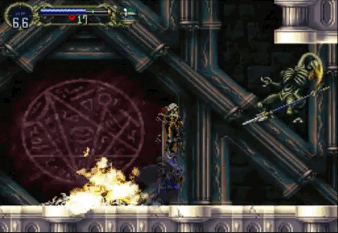
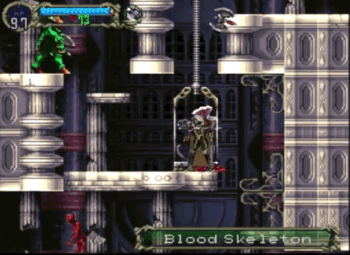
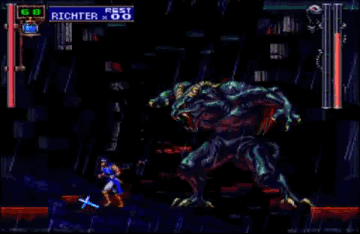
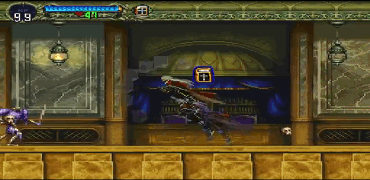
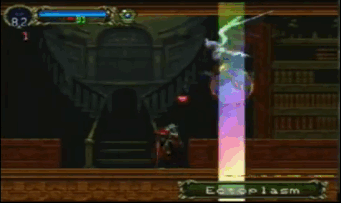
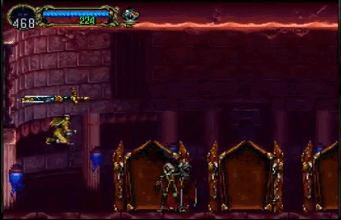
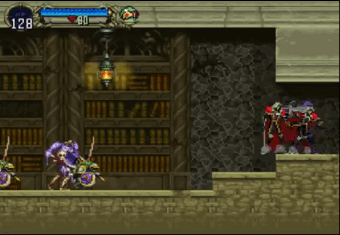
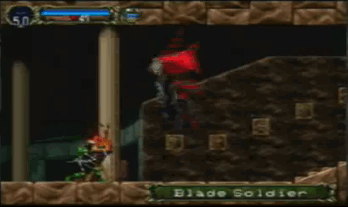


 Game Design Companion: A Critical Analysis of Wario Land 4 - $7.99
Game Design Companion: A Critical Analysis of Wario Land 4 - $7.99 Level Design: Processes and Experiences
Level Design: Processes and Experiences Speed Boost: The Hidden Secrets Behind Arcade Racing Design - $5.99
Speed Boost: The Hidden Secrets Behind Arcade Racing Design - $5.99 Adventures in Games Analysis: Volume I - $5.99
Adventures in Games Analysis: Volume I - $5.99







